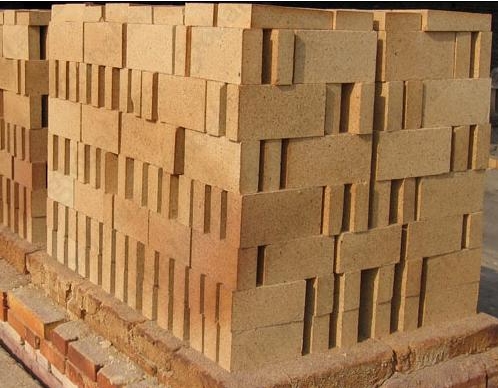- 23
- Nov
Dab tsi yog qhov sib txawv ntawm cov av nplaum cib thiab peb qib qib alumina cib?
What is the difference between clay bricks and three-level high alumina bricks?
Qhov sib txawv tseem ceeb ntawm cov av nplaum cib thiab cov av alumina siab yog cov ntsiab lus txhuas thiab qhov ntom ntom ntom ntom.
Cib nrog 40-48% cov ntsiab lus txhuas yog av nplaum cib. Cov av cib muaj cov cim sib txawv ntawm N-1, N-2, N-3, thiab N-4 hauv tus txheej txheem hauv tebchaws. Hauv kev tsim khoom thiab siv, N-2, N- 3 av nplaum cib tau siv dav, thiab lawv kuj yog cov khoom lag luam tsim los ntawm ntau lub tuam txhab. Qhov ntim ceev yog nruab nrab ntawm 2.1-2.15. Nyob rau hauv rooj plaub ntawm N-1 av nplaum cib, qee qhov ntsuas tau siab dua qib peb qib qib alumina siab.
Bricks with 55% aluminum content are third-grade high-alumina bricks with a bulk density between 2.15-2.25. At present, due to the production area and raw materials, the aluminum content of clay bricks is about 56%. The aluminum content of the clay bricks in Xinmi, Henan is about 56%, and the body density is above 2.15, which is basically a third-grade high-alumina brick. Moreover, the firing temperature is high, and the chemical index is not lower than the third-grade high alumina brick, but there is a difference in the softening temperature of the load.
The aluminum content of the three-level high alumina bricks currently produced is about 63%, and some have 65%. The body density is above 2.25, and the load softening temperature is slightly lower. In terms of chemical indicators, it is only different from the second grade high alumina bricks in unit weight and load softening temperature.
Cov tsos xim ntawm cov av nplaum cib thiab qib peb qib siab-alumina cib tseem txawv. Cov av nplaum cib yog xim liab-daj, thiab qib qib peb-qib alumina siab dawb thiab daj.
Muaj qhov sib txawv ntawm qhov hnyav ntawm cov av nplaum cib thiab qib peb qib siab alumina cib. Tib cib hom av nplaum cib yog sib zog dua qib peb qib siab alumina cib. Qhov ntsuas kub kuj tseem qis dua 20-30 ° C.
Cov cib av nplaum thiab qib peb qib siab alumina cib muaj qhov sib txawv ntawm qhov sib zog ua kom muaj zog thiab ua kom sov sov. Lub zog sib zog ntawm cov av nplaum cib yog 40Mpa, thaum lub zog nrawm ntawm qib peb qib siab alumina cib yog 50Mpa. Qhov hnyav ntawm cov av nplaum cib kuj tseem siab dua qib peb. Qhov refractoriness ntawm txhuas cib yog 30-40 ℃, thiab nws cov refractoriness yog li 30 ℃ qis dua.

